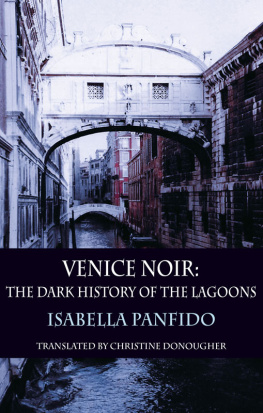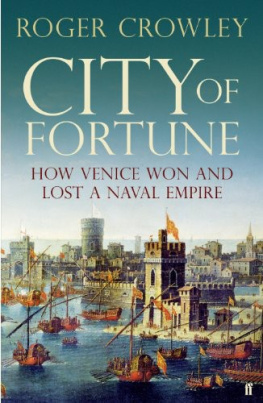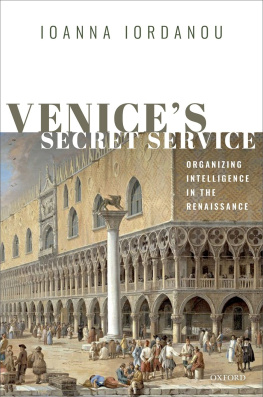
CONTENTS
Isabella Panfido lives and works in Venice and the Veneto. She has a degree in Russian Literature and Language and is an arts correspondent for the Corriere del Veneto. She is also a poet (her poetry has been translated into English, Spanish, Slovenian and Croatian), translator (from English and Russian) and literary critic for various publications.
Christine Donougher was born in England in 1954. She read English at Cambridge University and after a career in publishing is now a freelance translator of French and Italian. Her translation of The Book of Nights by Sylvie Germain won the 1992 Scott Moncrieff Translation Prize and she has been shortlisted twice for The Oxford-Weidenfeld Translation Prize for Night of Amber in 1996 and for Magnus in 2009, both also by Sylvie Germain.
Her translations for Dedalus from Italian are Senso (and other stories) by Camillo Boito, Sparrow (and other stories) by Giovanni Verga, Cleopatra goes to Prison by Claudia Durastanti and The Price of Dreams by Margherita Giacobino.
Venetorum urbs divina disponente providentia in aquis fundata, aquarum ambitu circumsepta, aquis pro muro munitur: quisque igitur quoquo modo detrimentum publicis aquis inferre ausus fuerit, et hostis patrie iudicetur: nec minore plectatur paena quam qui sanctos muros patriae violasset. Huius edicti ius ratum perpetuumque esto.
The city of the Veneti by the will of divine providence founded in water, surrounded by water, is protected by water instead of walls: and therefore let whosoever in whatsoever manner would dare to cause harm to the public waters be judged an enemy of the city and let him be punished with no less a penalty than if he had violated the sacred walls of a city: may the authority of this ruling be perpetually binding.
Words penned by the humanist Giovambattista Cipelli, known as Egnazio (Venice 1473-1553), and engraved in gold on a black marble plaque erected at the seat of the Magistrature for the Waters at Rialto, now in the Correr Museum.
When the Lion roared there was no alternative but to submit, trembling, to its law.
This edict leaves no room for doubt, the waters of the Lagoon were and are (or should be) sacred, inviolable as the precincts of a temple, the boundaries of the city. The most fascinating part of this dictat expressed in such categorical and exemplary terms as even now to strike a chord in the heart of every Venetian, if any such still exists lies in the incisive introductory description of the Urbs Venetorum: founded, perforce, by divine will, the conurbation of the Veneti rose from the water, sank its own foundations into the waters and was surrounded and embraced by the waters. As though in an amniotic fluid, contained within an invisible membrane of mestizza, water that is neither sea nor river, neither salt nor fresh, hybrid water, resulting from the constant interaction of sea tides and river flow, water that is progeny of Father Ocean and Mother Earth, the water of the Lagoon.
But what in actual fact was the Lagoon?
A brackish basin of some 550 square kilometres, extending south-west to north-east, enclosed and separated from the sea by a thin cordon of sandbars punctuated by three Lagoon inlets: the ports of San Nicol, Malamocco and Chioggia; divided, in relation to Venice, into the northern Lagoon and the southern Lagoon.
This is what we can see today when the aeroplane in which we are hypothetically flying circles over that variegated patch of water, speckled with little morsels of land, singed with graduated shades of blue green.
But what today lies beneath our shining eyes, which just cannot get used to the sight of this miniaturised marvel and its patent heart-rending fragility, has not always been like this.
Without presuming to speak for the geographer or the historian, we will simply note that the Lagoon is a landscape in every sense of the word, that is to say the result of human intervention in a natural environment, which is inherently unstable. We know it is about six thousand years old this the experts have established with some degree of certainty, thanks to a birth certificate, consisting of a core sample obtained in 1971 by drilling into the floor of the Lagoon to a depth of 950 metres in the area of the island of Tronchetto: it showed a first layer of about 9 metres of foraminiferal deposits that is, protozoa with shells of Lagoon origin, dating to the Holocene epoch, but beneath this, and extending 63 metres into the core, the sediment is of continental origin dating back to the Pleistocene; so the identity card of our beloved, brackish Eden-in-miniature tells us that the Lagoon is very young compared with the age-old Earth.
And traces of artefacts attest to a human presence from the second millenium BC; we know that the Romans were well acquainted with some of the Lagoons attractions but it is only from the sixth century AD that permanent settlements were established. Places grew up of legendary fame, sites of resistance to the barbarian invasions but also small centres of civilisation that left extremely fertile seeds: Altino, Spina, Costanziaca, Ammiana, populated by peoples who came from the hinterland to the north and south of the Lagoon basin.
The strange thing as related to us by the writer Jacomo Filiasi (who knew a great deal and what he did not know he imagined) is that a sort of Lagoon aristocracy soon became established, a kind of division between indigenes and outsiders, based on areas of provenance and settlement: so in the old chronicles the Patavini, Atestini, Montesilicani and Vicentini, who had settled in the central and lower Lagoon, were considered non-Venetian, whereas on the other hand the Aquilejesi, Concordiesi, Opitergini, Altinati, Feltrini and Acelani could claim to be of Venetian origin. It is difficult to get into the mindset of that time, but after all there is nothing new under the sun if even today the residents of Upper Castello, true heirs of the founders of the City distance themselves from the residents of Lower Castello, a motley crew of Greeks, Armenians, Dalmatians and more generally Levantines who only arrived in the City six or seven centuries ago, not to mention the feud now laid to rest not by reconciliation but by depopulation between the Arsenalotti and the Barnabotti.
But let us leave to its inauspicious fate the City that every day sees the countdown of its residents recorded in the implacable flashing-red digital figures in the little window of the pharmacy in Campo San Bartolomeo, alias San Bartolo, at the feet of a snickering Carlo Goldoni, one who was far-sighted with regard to the degeneracy of his fellow citizens. Triggering furious anger alternating with resigned discouragement, the bitter observation, every day and at every step, of the irredeemable vulgarity that has now destroyed this blessed plot, fallen from heaven or risen from the abyss, prevents me from finding any way to speak of the ineffable magic I still recognise, at night when it is inhabited only by rats and by its few citizens rather less numerous and bold than the rats or in the thick November fog when the more crass and tacky local commerce is temporarily hidden from view, allowing the seeping, fading stucco renderings to emerge, the only true heirs of the glorious age of Venetian colourism.
Too many pages, words, images have been heaped on the Unnamed wonder for me to dare add any more: every syllable about the City, in the writing or the reading, would sound trivial, banal, inadequate. And Calvinos Marco Polo has taught us the only way to speak of it is to do so indirectly.
Next page






![Bosworth - Italian Venice: a history[Electronic book]](/uploads/posts/book/194557/thumbs/bosworth-italian-venice-a-history-electronic.jpg)




